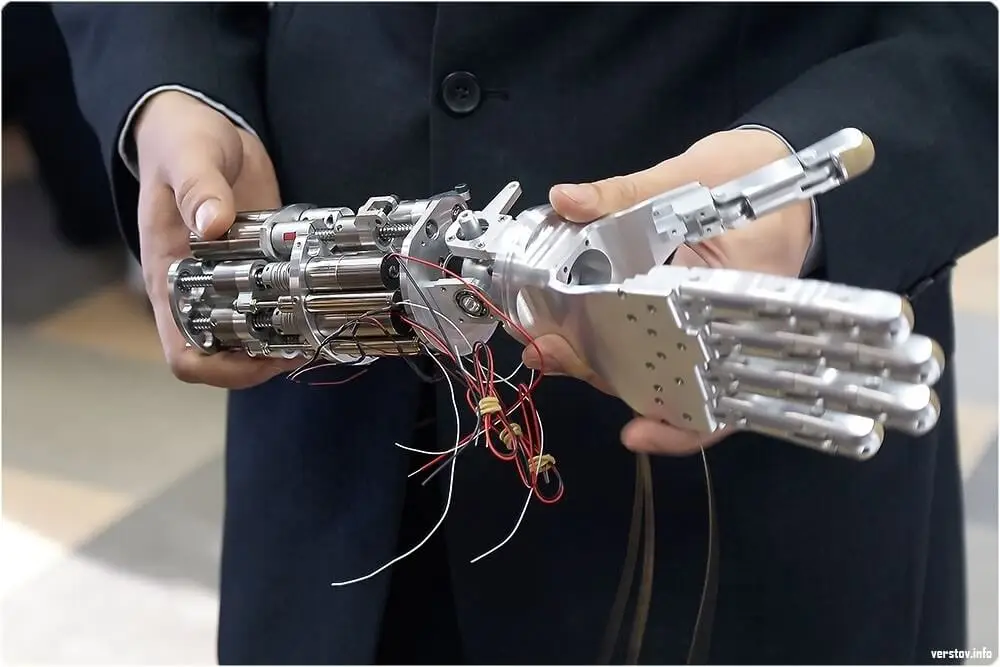What Is Transhumanism and How Can It Affect the Future?

Transhumanism is an intellectual movement that questions the natural limits of humanity (such as aging, death, and disease). It advocates overcoming them through technology.
According to this movement, human beings aren’t at the end of their evolution, but at the beginning of another stage. But how will this be possible? We’ll explain in detail below.
What is transhumanism?
Transhumanism, or simply h+, is a relatively recent school of thought. It seeks to overcome the biological limitations of humanity through technological enhancement of the organism. In the future, it proposes the separation of the mind from the human body.
The aim of this movement is to enhance and improve all human capabilities (both physical and mental), to the point that we’ll be more intelligent than any genius. We’ll have the ability to feel and expand pleasant emotions, avoiding unpleasant ones; as well as preventing aging and diseases.
In this sense, transhumanists say that nature must be transformed, starting with the human genome. In this way, we would guarantee a better life and maximum development.

Read also: What Does It Mean to Dream of Death?
Origins
The father of the concept is said to be philosopher and futurist Fereidoun M. Esfandiary, who reportedly used the term transhuman in 1966 during his lectures at the New School for Social Research in New York. However, the word already appeared in an article published by paleontologist Pierre Teilhard de Chardin in 1951, entitled From Prehuman to Ultrahuman.
There, Teilhard traces the evolution of humanity to a transhuman state, which includes technological variables such as a telephone and television network that allows direct tuning between human minds.
Shortly thereafter, in 1957, English biologist Julian Huxley published an article in which he coined the term transhumanism. There, the author envisions the transition from a miserable, painful, and short life to a new evolutionary stage of the human being, in which it transcends itself as a species.
The human species can, if it chooses, transcend itself – not simply sporadically, an individual here in one form and there another individual in another, but in its integrity as humanity. We need to give a name to that belief. It may be that transhumanism is a good term; man as man, but self-transcending.
Subsequently, from the 80s of the last century, this position was acquiring followers. Thus, the first meetings among transhumanist intellectuals were established.
Then, in 1998, the European philosophers David Pearce and Nick Bostrom created the World Transhumanist Association or Humanity Plus (H+). This is a non-profit organization that promotes the discussion of possible improvements in human capabilities through new technologies. Let’s take a look at some of them.
Transhumanist technologies
Transhumanism seeks to achieve its goals through technological advances in different areas. Let’s get to know some of its contributions.
1. Nanotechnology
This is the technology that seeks to manipulate matter at a nanometer scale, the nanometer being the unit of measurement that is equivalent to one billionth of a meter.
Within transhumanism, this tool would be an excellent means to achieve medical improvements, through molecular machines that would move through the organism to repair tissues, attack pathogenic agents, destroy cancer cells, etc.
Although this technology is in its earliest stages, experts have high expectations for it. Therefore, it’s likely that sooner or later it will mark a turning point in the history of medicine.
2. Genetic engineering
This consists of the genetic manipulation of the zygote in order to modify genes that imply qualities or characteristics. For example, modifying the DNA of an organism to prevent the risk of suffering from a congenital disease.
This technology is one of the most controversial, as it has major ethical implications. For example, where is the limit of what is modifiable? Who will have access to this type of improvement?
Discover more here: Chris Hemsworth Learns He May Be at Risk for Alzheimer’s Through Genetic Testing
3. Cybernetics
This interdisciplinary approach deals with feedback-based control systems. However, the concept has been popularized around the notion of a cyborg, an entity composed of organic elements and cybernetic devices.
One of the best-known examples in science fiction and film is RoboCop, which merges the organic and the synthetic, the human and the machine, through prostheses, brain chips, and other types of devices.
It may seem a very futuristic concept, but, in reality, the integration of the body with technology started quite some time ago. For example, with the use of pacemakers to regulate heart stimulation and maintain proper heart rate.
4. Artificial intelligence
This is an inter-discipline whose objective is to create intelligent systems, understanding intelligence as the capacity to manipulate information and transform it into something new. In this sense, advances in this area are increasingly surprising. To such an extent, that today we have machines that have managed to surpass certain human capabilities.
Therefore, creations in artificial intelligence are essential to build the systems and machinery required for transhumanism.
5. Mind-machine fusion
The most extreme claim of transhumanism is to abandon our organic body, transferring the mind to a machine. In this way, we could live forever inside a mechanical and digital unit, such as a computer or a robot.
However, this raises a series of philosophical questions worthy of discussion. If this were to become possible, would the mind copied to the machine still be that person? Would both versions of the mind be that person? If two copies were made, would they be two independent persons?
This is one of the most far-fetched proposals and, to date, there is nothing to make us believe that it would be possible in the future. The enigmas of human consciousness must first be unraveled.

Future implications of transhumanism
Today it is a reality that scientific and technological advances have made us advance as a species. However, at this point, it’s wise to stop and reflect on the consequences of this progressive development on society. While the appeal of transhumanism cannot be denied, that doesn’t take away our responsibility to evaluate the big picture.
For example, we should reflect on and discuss important questions such as the following:
- What would be the implications of nanotechnological implants in the brain? Would they condition our freedom of thought?
- How will genetic alteration affect the next generations? In this transition process, will those who were genetically modified have a noticeable advantage over those who were not?
- Transhumanism advocates the application of technological improvements for the entire population, not just for those who can afford it. But how would equality be achieved?
Transhumanism is an attractive proposition for the human species, as it leaves many expectations about the preventability of disease and death itself. However, in light of these claims, it’s pertinent to consider the ethics behind them.
All cited sources were thoroughly reviewed by our team to ensure their quality, reliability, currency, and validity. The bibliography of this article was considered reliable and of academic or scientific accuracy.
- Monteverde R. El transhumanismo de Julian Huxley: una nueva religión para la humanidad. Cuadernos de bioética [Internet] 2020 [consultado 07 feb 2022]; 31(101): 71-85. Disponible en: https://dialnet.unirioja.es/servlet/articulo?codigo=7463006
- Velázquez H. Transhumanismo, libertad e identidad humana. THEMATA [Internet]. 2009 [consultado 7 feb de 2022]; (41). Disponible en: https://revistascientificas.us.es/index.php/themata/article/view/594
This text is provided for informational purposes only and does not replace consultation with a professional. If in doubt, consult your specialist.








